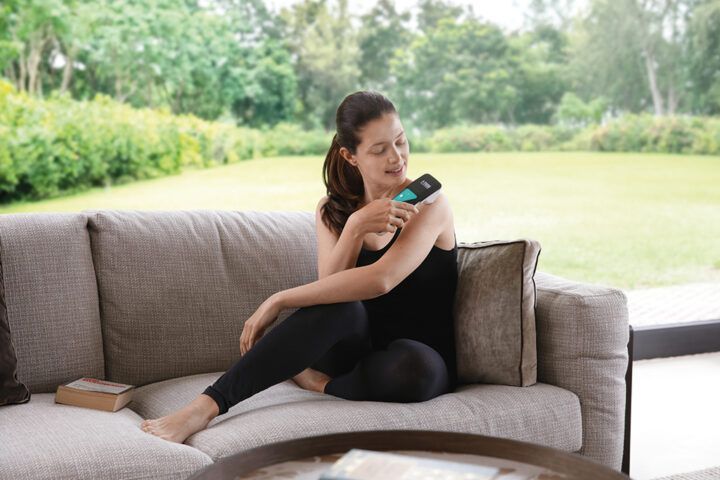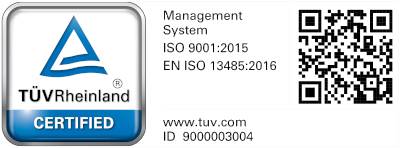Have you ever heard of ultrasound therapy?
Ultrasound therapy is an instrument-assisted physical therapy that uses sound waves to transfer energy to the human body. In recent years, it has become very popular due to its anti-inflammatory and decontracting action, but also due to its effectiveness in the reabsorption of haematomas or the healing of damaged tissue. In practice, it is ideal for treating localised pain in just a few sessions.
Let’s get to know it better together!
What ultrasound therapy is used for
Before diving into what ultrasound therapy is for and how it works, let’s take a step back.
As you can guess, ultrasound therapy uses ultrasound, i.e. sound waves at a very high frequency that can reduce inflammatory states, contractures and excess fluid in the tissues.
Ultrasound is emitted from the head of a device through the piezoelectric effect of a quartz or ceramic disc. The piezoelectric effect is created by a series of compressions and expansions of quartz, achieved by subjecting the crystal to an alternating electric field.
An ultrasound therapy device consists mainly of an alternating current generator that powers a head. Inside the latter is installed a transducer (the piezoelectric disc or quartz plate), which converts electrical energy into mechanical energy (sound vibrations). This energy is then transmitted to the biological tissues via a special ultrasound conductive gel.
The ultrasonic wave penetrates the tissue to a maximum depth of 5 cm, depending on its emission frequency – typically 1 or 3 MHz.
For the treatment of muscle and joint problems (sprains, bruises, inflammation), a power of 1 W/cm2 is sufficient to guarantee excellent results.
Which pathologies can be treated with ultrasound therapy?

Now that you have a clearer idea of how this technique works, you may be wondering which pathologies it is best suited for.
Ultrasound therapy is ideal for treating muscle and joint disorders due to the following effects:
- analgesic and anti-inflammatory
- muscle tension relief
- resorption of haematomas
- tissue healing stimulation
It is also widely used in sports and can be your ally if you have been diagnosed with one of the following conditions:
- sciatica
- neuritis
- periarticular calcifications
- ulcers
- Duplay’s disease
- Dupuytren’s disease
- tendinitis
- organised haematomas
- scar tissue
- muscle contractures
Although this therapy can be easily carried out by yourself, there are some contraindications and warnings, which will be covered in this guide. For this reason, we recommend that you always consult your doctor before starting an ultrasound therapy.
Areas to be treated
Let’s see below which parts of the body are most affected by diseases that can be treated with ultrasound.
Ultrasound therapy for shoulders and neck
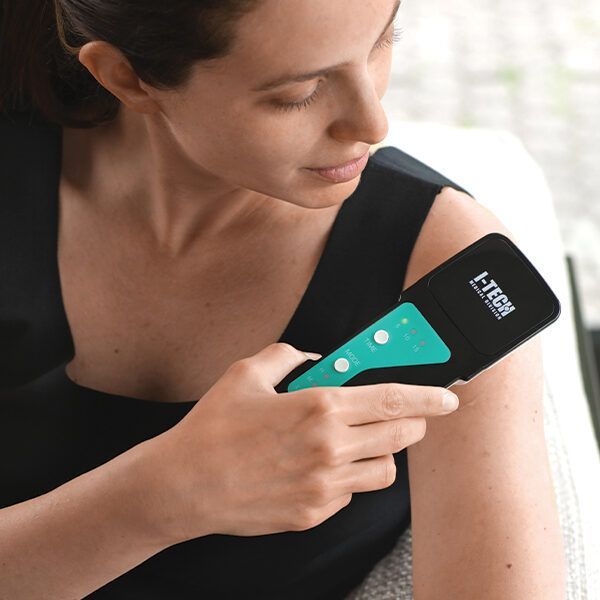
The shoulders, and specifically the trapezius muscles, are often strained by those who work all day at a computer or perform repeated actions over a prolonged period of time. Stiffness, contractures and inflammation are the main effects of incorrect posture, maintained over a prolonged period of time.
Ultrasound therapy for hands
The hands can be affected by Dupuytren’s disease, especially in old age and in men. It is a thickening of the palm of the hand that limits the full extension of the ring and little finger.
Rhizoarthrosis is also a painful condition that restricts the thumb’s movement when grasping objects. Unlike Dupuytren’s disease, it affects mostly women.
Ultrasound therapy for knees
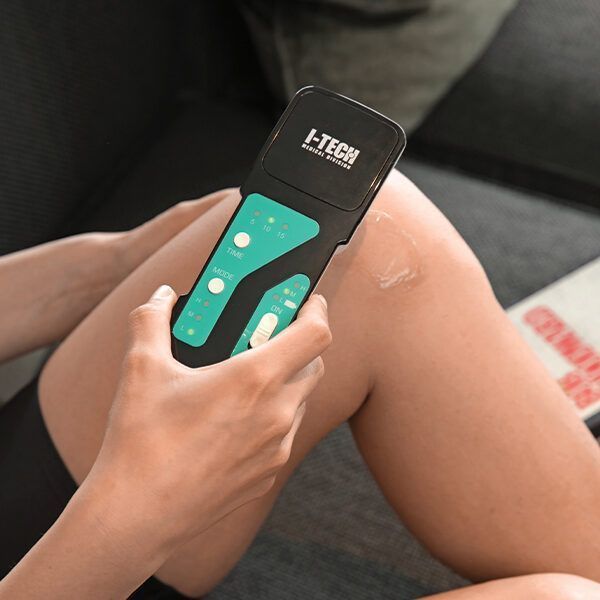
The knee is also one of the areas most treated with ultrasound therapy, as it is often the subject of tendonitis and inflammation.
Ultrasound therapy: the benefits
The main benefits of ultrasound therapy are
- the reduction of pain
- the reduction of inflammation
- the advanced treatment of contractures
You can learn more about mechanical, thermal, chemical and cavitation effects in this technical article.
How does an ultrasound therapy session take place?
Ultrasound therapy is one of the simplest and fastest home physical therapies. It requires no special preparation prior to treatment and a session lasts no longer than 15 minutes, depending on the pathology.
How to dress and prepare before an ultrasound therapy session?
The area to be treated must be bare, as the head of the device must be in direct contact with the skin.
We recommend cleansing the skin before using the device and cleaning the head with a 70% alcohol solution or mild soap. Before and after use. To prevent gel residue from impairing the performance of the device.
In the case of excessive hair, it is best to remove the hair from the area to be treated to facilitate the sliding of the head and for better adherence.
How does an ultrasound therapy session take place?
We distinguish between professional therapy and home therapy. The main difference is in the power, the possibility of carrying out the immersion treatment, and of course on who performs the treatment (the therapist in the first case).
The therapy can be carried out in two ways, using different media:
- with conductive gel: the head of the device is applied to the area to be treated by sliding onto conductive gel. It is the most common therapy and can also be performed at home with I-Tech Medical Division devices. In this case, the head must always remain in contact with the skin, making slow rotary movements.
- with water (immersion therapy): this is only possible with devices for professional use and must therefore be performed by a professional. In this case, a basin full of water is used, into which the area to be treated is immersed together with the head of the device emitting the ultrasound.
How long does an ultrasound session last?
The duration of a session can vary from 5 to 15 minutes, depending on the pathology to be treated and the selected intensity.
If your doctor has not given you specific treatment instructions, fear not. In the user manual of our products you will always find a table with indications about duration (5, 10 or 15 minutes) and intensity (low, medium, high) for all pathologies for which the device has been certified.
When will we see the first results?
The results depend on several factors. You may already notice after the first session that the pain is mild, or after a little longer. You must always consider your general state of health, your age, the intensity of the pain and the diagnosed pathology.
We recommend that you always talk to your doctor about the intensity, duration of the session and the entire treatment cycle. Who else knows better your medical history?
What are the contraindications of ultrasound therapy?
Are ultrasounds bad for you? Do they cause discomfort or pain?
Don’t worry, ultrasound therapy is a safe technique that causes no pain. During the therapy, you should not feel any burning on the area to be treated and no vibration.
If the therapy is carried out correctly, the treatment will have no side effects.
However, this therapy is not suitable for everyone. For example, our Powersonic and Mio-Sonic devices are contraindicated – unless otherwise prescribed by a doctor – if you have one of the following conditions:
- severe arrhythmias
- wear a pacemaker
- epilepsy
- active phlebitis or thrombophlebitis
- fever
- tuberculosis
- malignant tumours and neoplasms
- local infections
- metal implants
- venous thrombosis
- severe osteoporosis
- arteriopathy
- pregnancy
- children
We also reassure you that no side effects have ever been experienced using Powersonic and Mio-Sonic. You can use them with total peace of mind. In any case, we advise you to read the user manual to be aware of all warnings before using the device.
Ultrasound therapy at home: how to do it
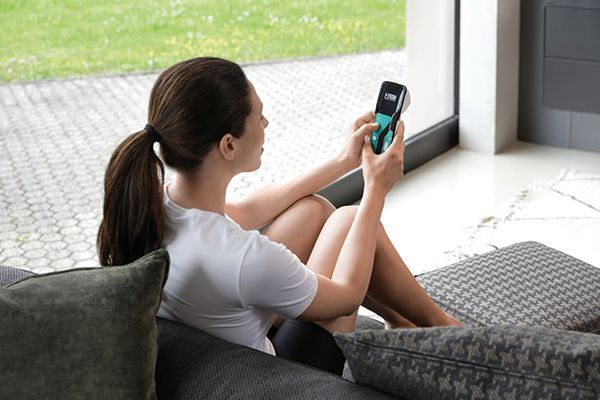
Doing ultrasound therapy at home is very simple. In just a few steps, you can carry out the therapy with confidence. Just follow these few steps:
- Place a generous amount of gel on the body part to be treated. The ultrasound gel is essential for promoting the transmission of sound waves.
- connect the device to the power cord if you do not want to use the battery mode (only available for the Powersonic model)
- switch the device on
- sets the intensity of the treatment: L (“low” – low intensity), M (“medium” – medium intensity) or H (“high” – high intensity)
- set the duration of the therapy: 5, 10 and 15 minutes
- start the therapy with slow circular movements
Remember that the head should be applied by pressing slightly. It must always be moved over the area to be treated, in close contact with the skin. If the gel starts to dry out during the session, add more.
Pay attention to the type of gel you use. It must be a gel specifically formulated for ultrasound therapy. You can also use gels and creams with specific active ingredients, as long as they are conductive and water-based. Through the biochemical effect linked to phonophoresis, the active ingredient in the cream or gel will be delivered directly to the body part to be treated.
When does the session end?
It is easy to recognise when a session is over, as some of the indicator lights on the device will switch off, as described in the user manual.
To ensure your safety, both of our ultrasound therapy devices are equipped with a system for recognising correct contact between the ultrasound head and the skin. In case of incorrect contact or no contact, the therapy time LED will start flashing and the ultrasound intensity will be reduced. Once the head-skin contact is restored, the intensity will automatically slowly increase to the previously set level.
How to choose an ultrasound device?
As you may have guessed, doing ultrasound therapy at home is possible and even convenient.
Before you start, however, we recommend that you consult a specialist to receive an accurate diagnosis and understand how to set up your device.
You can find various on the market. How can you recognise the one best suited to you? We’ll help you!
First, always go for certified medical devices. This will guarantee you a device that is safe for your health and for use at home (if not for professional use).
Then you will have to assess what your needs are.
Are you a person who moves around a lot and perhaps also does a lot of physical exercise?
Then a simple and intuitive device like Powersonic allows you to do therapy when you want and where you want, without necessarily having to be connected to electricity.
Powersonic has a recommended list price of €329. Remember, however, that since it is a certified medical device, you will be able to deduct 19% of the expense incurred in your 730 (Italy tax return form).
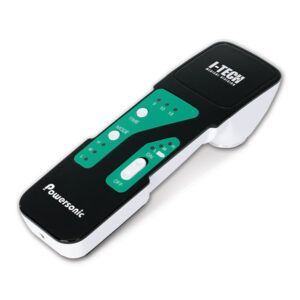
An effective model – though less recent than Powersonic – is Mio-Sonic. With Mio-Sonic you can easily carry out the therapy by plugging the device into a wall socket. Its recommended list price is 249€ and the same rule on 19% deductibility of the expense applies.
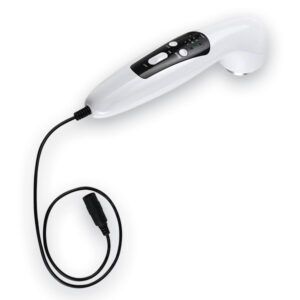
Wondering where you can buy Powersonic or Mio-Sonic?
You can find us throughout Italy, thanks to our extensive network of dealers and distributors. More than 2000 outlets including health, orthopaedics and parapharmacies, which can best advice and support you before and after your purchase.
Discover our ultrasound therapy models!
Compare the features and get all the information you need.
If you have any questions that have not been answered in this article , contact us now. We will be happy to give you all the answers you are looking for.


